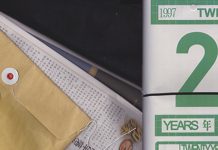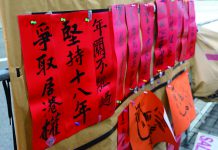Besides, Kwan disagrees with the assumption that learning Chinese in Putonghua necessarily enhances students’ understanding of Chinese language, especially in the study of Chinese literature. “Ancient texts and poetry before the Song Dynasty should be recited in Cantonese as this dialect has a closer resemblance to the ancient Chinese phonology,” says Kwan, “Only by learning texts in their closest phonology can one appreciate their beauty.”
In June last year, the Education Bureau (EDB) finally released the findings of a study it had commissioned between 2012 and 2015 on the efficacy of teaching in Putonghua. The release came after repeated calls for the findings to be made public when it emerged that it had been submitted to the bureau many months before. It revealed there was no evidence to show that it was more effective to teach Chinese in Putonghua rather than Cantonese. Despite the findings, growing opposition to wholesale PMIC and a trend for more secondary schools to switch back to Cantonese, the EDB insists it will stick with its policy of promoting PMIC as a long-term goal.
Another controversy surrounding the medium of instruction in Hong Kong schools is the policy on Fine-tuning of Medium of Instruction for Secondary Schools. Mother-tongue teaching was introduced after a series of studies and reports, including those conducted by overseas experts hired by the colonial government, showed that students learned better using their native language – in Hong Kong’s case, Cantonese. Most schools followed EDB guidelines when they were enforced in 1998-9, but some were allowed to keep using English as the medium of instruction (MOI), based on the ability of their teachers, students and support measures in place.
Since then, many parents have been keen to enroll their children in EMI schools as they believe that EMI is superior. However, in response to criticisms about the perceived deterioration in English standards and a call for more choices, the EDB introduced the fine-tuning policy in 2010-11. Under the policy, schools are given flexibility on which language to teach in, in which classes and to which students.
Wong Yuk-nam, a veteran secondary school science teacher says the implementation of mother-tongue teaching in Hong Kong has been a “disaster” because it meant a handful of EMI schools were seen as superior because of the perceived elevated status of English.
However, he is also opposed to “fine-tuning”. “CMI schools have been used to teaching in Cantonese,” says Wong. “It is hard to change [back] to EMI now.”
In Wong’s CMI school, the integrated science subject is taught in English in junior forms, whereas most non-language subjects are still taught in Chinese. However, when students can choose their own electives in senior forms, they will tend to avoid EMI subjects.
“Fine-tuning is somehow useless,” says Wong. He explains that students are either afraid of or are not capable of learning in English unless they are consistently exposed to an English learning environment. Wong would prefer to see schools teach in English and opposes mother-tongue teaching, but he thinks fine-tuning worsens rather than helps the problem of declining English standards. “I would rather ask students to study all subjects in Cantonese,” he says.
Lee Yuen-ying, a secondary five student in a CMI school, agrees with the rationale behind fine-tuning and says it does provide more English-learning opportunities. But she thinks its execution puts students in a bind. Lee studied biology in Cantonese in Form Four but chose the EMI class in Form Five.
“We completely acquired the knowledge in Chinese,” says Lee. “So we are unable to answer the examination paper in English even when I can think of the answer in Chinese.”
Of the 40 students who had originally chosen the EMI class, 36 switched to the Chinese class because “those studying in Chinese have much better academic results …We don’t want to get a lower grade because of our language skills,” says Lee.









































